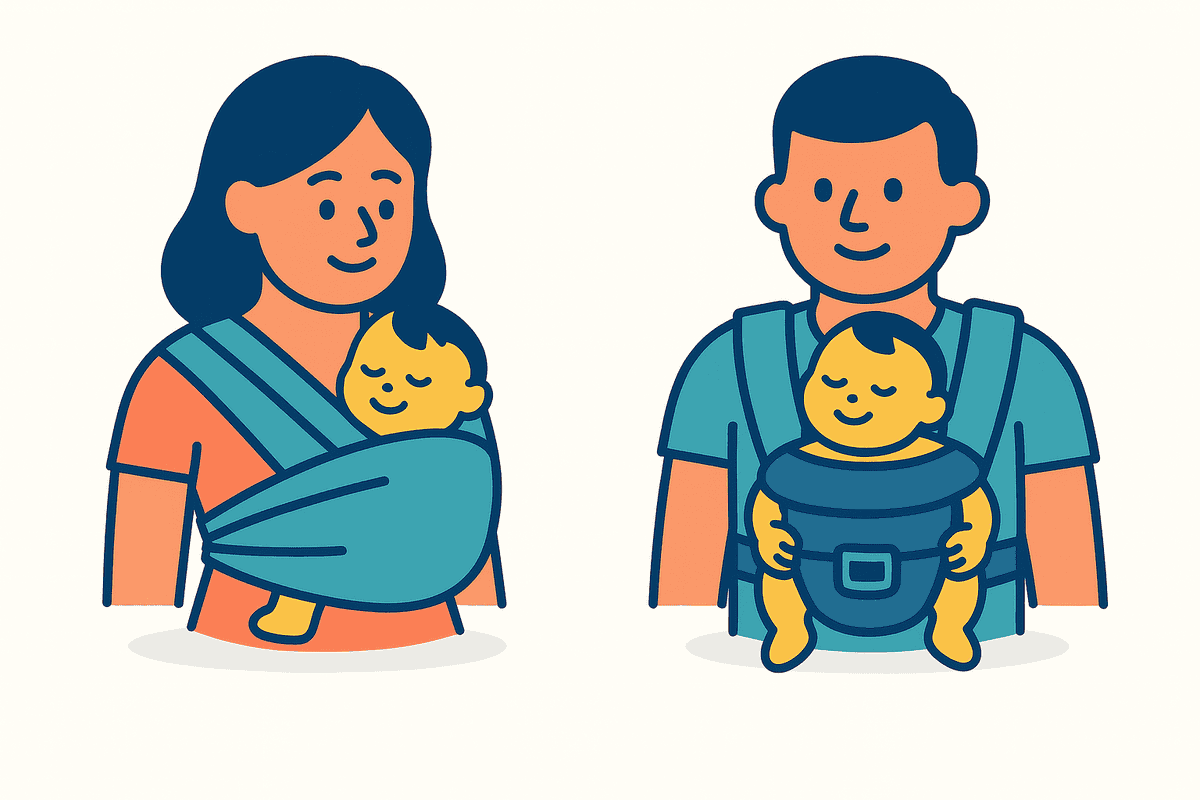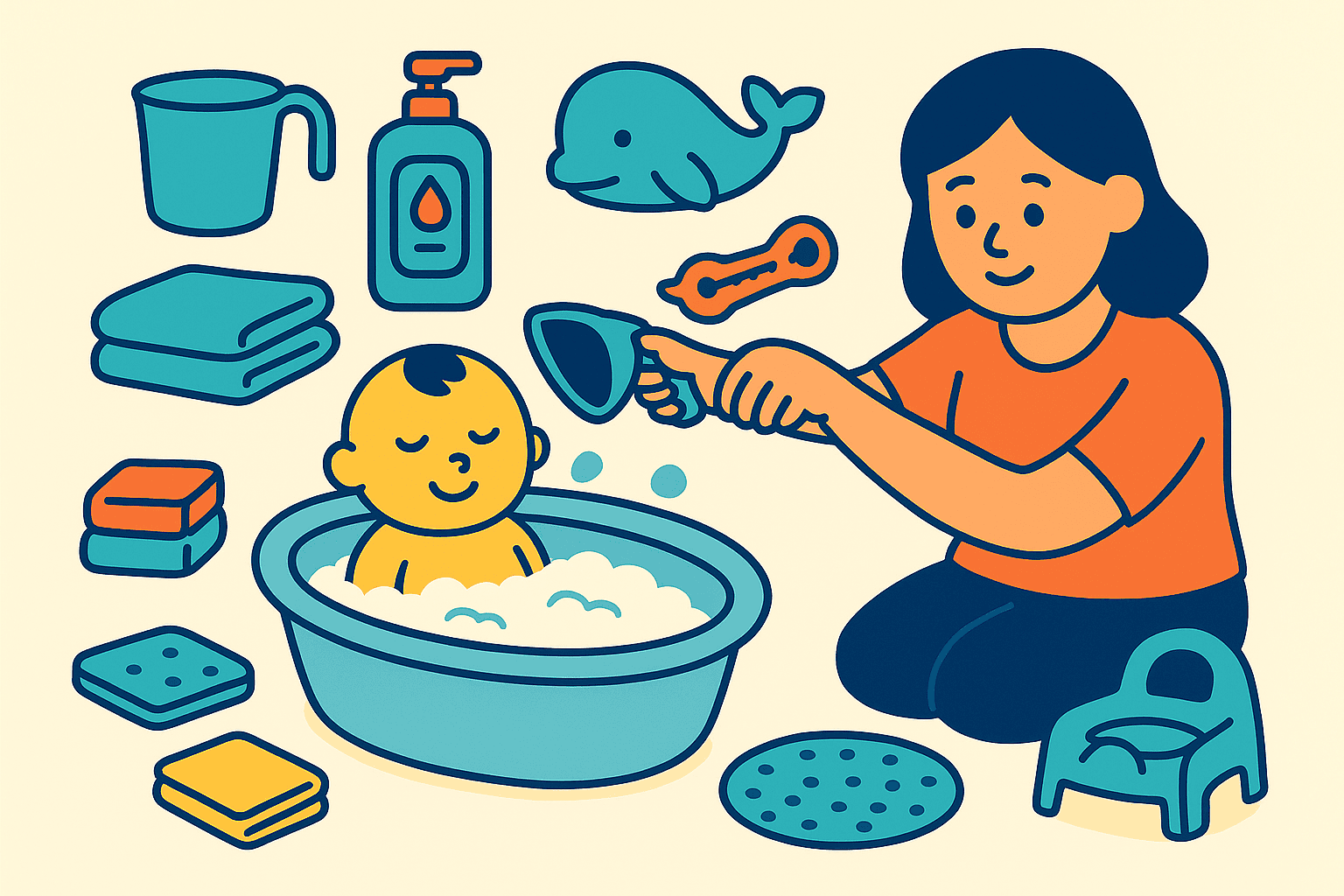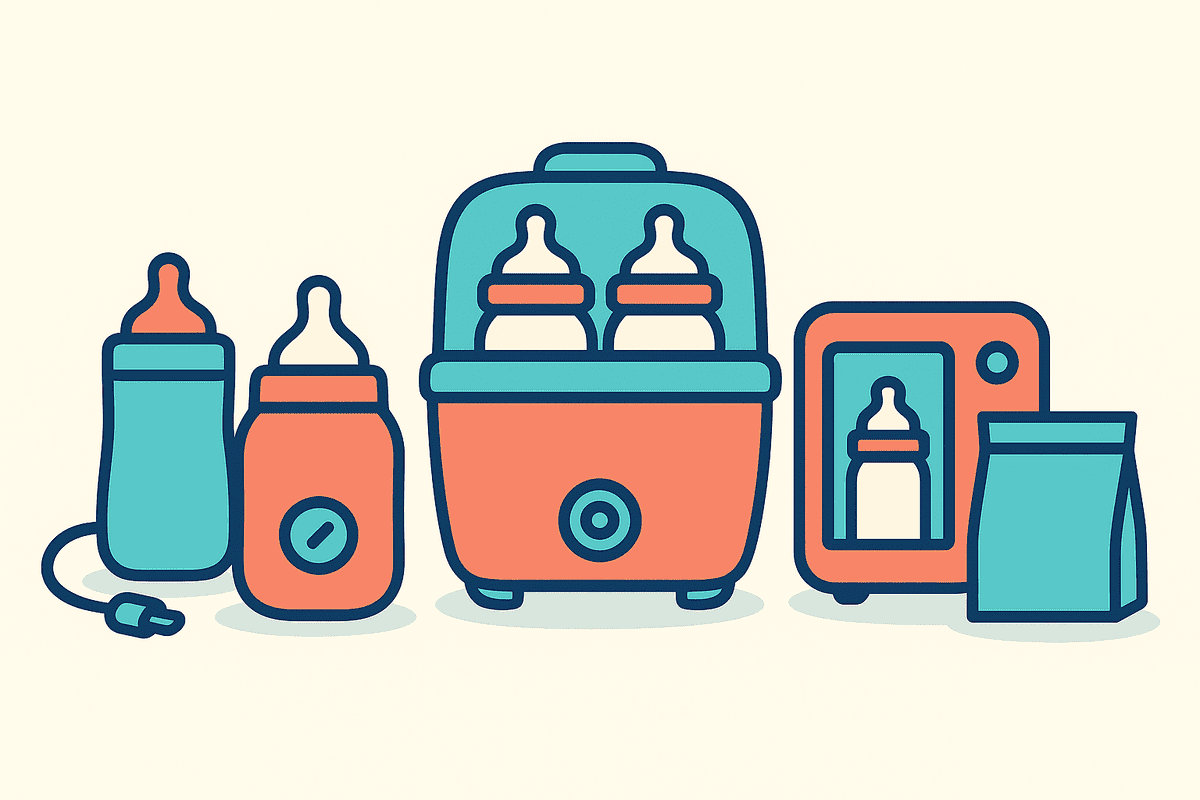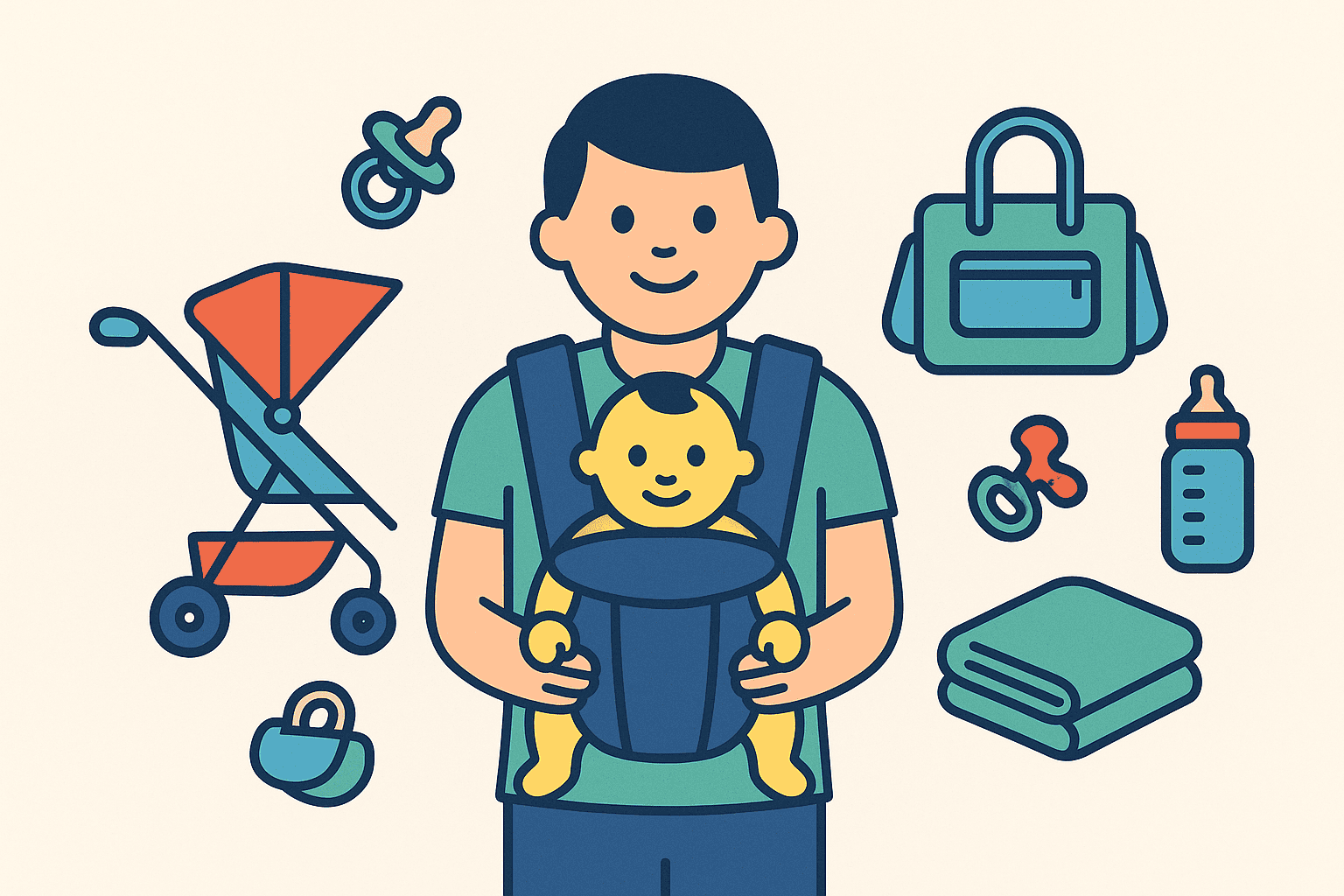Baby Carriers: Wraps vs Structured Guide
Quick Answer
Both wraps and structured carriers have their place in your baby-wearing journey. Wraps offer ultimate comfort and closeness for newborns, while structured carriers provide convenience and support for older babies and toddlers.
In This Guide
- Complete comparison of wraps vs structured carriers
- When to use each type of carrier
- Safety considerations for both styles
- How to choose the right carrier for your needs
- Tips for successful baby wearing
- Product recommendations for each category
Amazon Baby Registry
*Subject to availability and Retailer's terms.
We earn commissions from these links.
Create Your Registry
Amazon Baby Registry
*Subject to availability and Retailer’s terms.
We earn commissions from these links.
All Products in This Guide
Top baby carriers for different needs and stages
Our Recommendations
(3 products)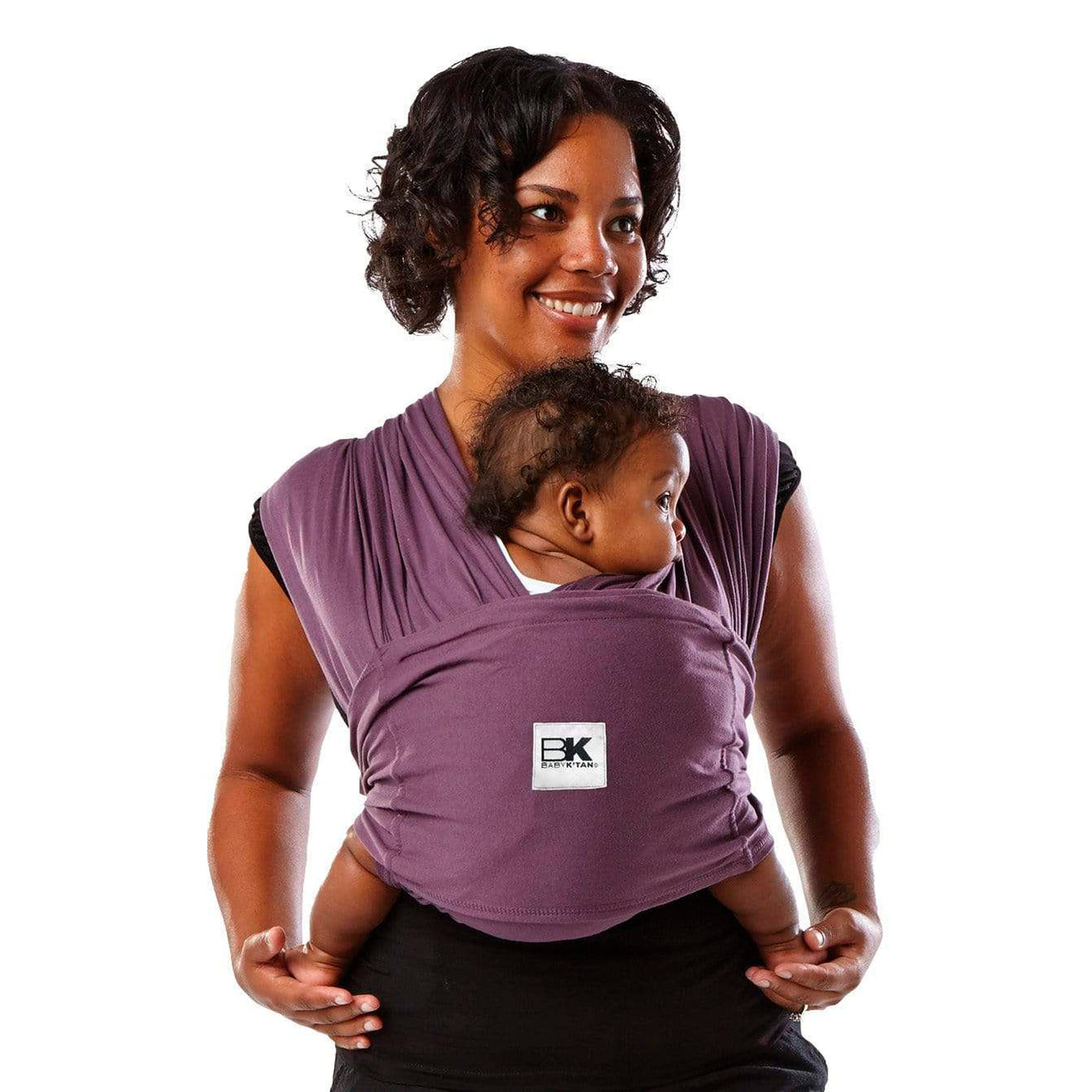


Understanding Baby Carriers: The Basics
Baby wearing has been practiced for centuries, but modern parents face an overwhelming array of options. The two main categories—wraps and structured carriers—each offer unique benefits for different stages of your baby’s development.
Why Baby Wearing Matters:
- Bonding: Physical closeness strengthens parent-baby connection
- Convenience: Hands-free parenting for daily tasks
- Comfort: Babies often sleep better when worn
- Development: Supports healthy hip and spine development
- Practical: Navigate crowds, stairs, and tight spaces easily
Wraps: The Ultimate in Comfort
What Are Wraps?
Wraps are long pieces of fabric that you tie around your body to create a secure pouch for your baby. They offer the closest thing to being back in the womb and provide excellent support for newborns.
Types of Wraps:
- Stretchy Wraps: Soft, flexible fabric that’s easy to use
- Woven Wraps: Stronger fabric for longer wearing sessions
- Hybrid Wraps: Pre-tied options like the Baby K’tan
Benefits of Wraps
Comfort Advantages:
- Customizable Fit: Adjust to your exact body shape
- Distributed Weight: Spreads baby’s weight evenly across your body
- Soft Support: Gentle on baby’s developing spine
- Versatile Positions: Multiple carrying positions possible
Practical Benefits:
- Compact: Folds small for storage and travel
- Washable: Easy to clean and maintain
- Versatile: Works for different body types
- Cost-Effective: Often more affordable than structured carriers
When to Choose Wraps
Ideal For:
- Newborns (0-4 months): Perfect for the fourth trimester
- Skin-to-Skin Time: Excellent for bonding and comfort
- Short Trips: Quick errands and around the house
- Breastfeeding: Easy access for nursing
- Parents Who Want Flexibility: Customizable fit and positions
Consider Wraps If:
- You want maximum comfort for your baby
- You’re comfortable with a learning curve
- You plan to wear your baby frequently
- You want a carrier that grows with your baby
- You prefer natural, breathable materials
Structured Carriers: Convenience and Support
What Are Structured Carriers?
Structured carriers have a defined shape with buckles, straps, and padding. They’re designed for quick on-and-off use and provide excellent support for both parent and baby.
Types of Structured Carriers:
- Soft Structured Carriers (SSC): Padded carriers with buckles
- Mei Tais: Hybrid between wraps and structured carriers
- Backpacks: Designed for hiking and outdoor activities
- All-in-One Carriers: Convertible from front to back carry
Benefits of Structured Carriers
Convenience Advantages:
- Quick Setup: Easy to put on and take off
- Consistent Fit: Same fit every time you use it
- Hands-Free: No tying or adjusting needed
- Partner Friendly: Easy to share between parents
Support Benefits:
- Ergonomic Design: Distributes weight across shoulders and hips
- Adjustable: Grows with your baby
- Secure: Buckles and straps provide confidence
- Versatile: Multiple carrying positions
When to Choose Structured Carriers
Ideal For:
- Older Babies (4+ months): Better support for heavier babies
- Long Wearing Sessions: Comfortable for extended use
- Active Parents: Hiking, walking, and outdoor activities
- Quick Transitions: Easy on-and-off for car trips
- Partners: Easy to share between parents
Consider Structured Carriers If:
- You want convenience and ease of use
- You plan to wear your baby for long periods
- You’re active and need secure support
- You want to share the carrier with a partner
- You prefer a more traditional carrier design
Safety Considerations for Both Types
General Safety Rules
Positioning:
- Knee-to-Knee Support: Baby’s knees should be higher than their bottom
- M-Shape Legs: Legs should form an M-shape when viewed from the side
- T-Shape Spine: Spine should form a natural T-shape
- Chin Off Chest: Ensure baby can breathe freely
Monitoring:
- Check Regularly: Ensure baby is comfortable and secure
- Watch for Overheating: Monitor baby’s temperature
- Position Changes: Adjust if baby seems uncomfortable
- Never Sleep in Carrier: Transfer to safe sleep surface
Wrap-Specific Safety
Tightness:
- Snug Fit: Wrap should be tight enough to support baby
- No Sagging: Baby should not sag or slump
- Secure Knots: All knots should be secure and tight
- Regular Checks: Monitor tightness throughout wearing
Fabric Safety:
- No Stretching: Avoid overstretching the fabric
- Proper Length: Use appropriate length for your body size
- Clean Fabric: Keep wraps clean and dry
- Check for Wear: Replace if fabric shows signs of wear
Structured Carrier Safety
Fit and Adjustment:
- Proper Sizing: Choose the right size for your body
- Tight Straps: All straps should be snug but comfortable
- Weight Limits: Never exceed manufacturer weight limits
- Regular Checks: Check all buckles and straps regularly
Positioning:
- Proper Seat: Ensure baby is seated correctly
- Head Support: Use head support for younger babies
- Leg Position: Check that legs are properly positioned
- Comfort Monitoring: Watch for signs of discomfort
Choosing the Right Carrier for You
Consider Your Lifestyle
Active Parents:
- Structured carriers offer better support for hiking and walking
- Look for carriers with good weight distribution
- Consider carriers with multiple carrying positions
Urban Parents:
- Wraps are great for navigating crowded spaces
- Structured carriers work well for public transportation
- Consider compact options for storage
Working Parents:
- Structured carriers are easier for quick transitions
- Wraps offer comfort for longer wearing sessions
- Consider carriers that work well with different clothing
Consider Your Baby’s Stage
Newborns (0-4 months):
- Wraps provide the best support and comfort
- Look for carriers that support the natural C-curve
- Consider carriers that allow skin-to-skin contact
Older Babies (4+ months):
- Structured carriers offer better support for heavier babies
- Look for carriers that support proper hip positioning
- Consider carriers that allow face-out carrying
Toddlers (12+ months):
- Structured carriers with back carry options
- Look for carriers with higher weight limits
- Consider carriers designed for active toddlers
Tips for Successful Baby Wearing
Getting Started
Start Slowly:
- Begin with short wearing sessions
- Practice putting the carrier on without baby first
- Have someone help you the first few times
- Start with a calm, well-fed baby
Practice Makes Perfect:
- Practice the carrier at home before going out
- Try different positions to find what works
- Don’t give up if the first attempt doesn’t work
- Watch videos and read instructions carefully
Comfort Tips
For Parents:
- Distribute Weight: Use both shoulders and hips
- Take Breaks: Don’t wear for too long without breaks
- Stay Hydrated: Drink plenty of water
- Listen to Your Body: Stop if you feel pain or discomfort
For Babies:
- Check Positioning: Ensure proper positioning regularly
- Monitor Comfort: Watch for signs of discomfort
- Allow Movement: Let baby move and adjust
- Provide Stimulation: Talk and interact with your baby
Frequently Asked Questions
Q: When can I start using a baby carrier? A: Most carriers are suitable from birth, but check the manufacturer’s guidelines. Some carriers have specific newborn settings or require additional inserts.
Q: How long can I wear my baby? A: Start with short sessions (15-30 minutes) and gradually increase. Most experts recommend taking breaks every 2-3 hours and never wearing for more than 4-6 hours at a time.
Q: Can I breastfeed while wearing my baby? A: Yes, many carriers allow for discreet breastfeeding. Practice at home first and ensure your baby can latch properly while in the carrier.
Q: Do I need different carriers for different stages? A: Some carriers grow with your baby, while others are stage-specific. Consider your budget and how often you plan to wear your baby.
Q: How do I know if my baby is comfortable? A: Watch for signs of contentment (sleeping, calm demeanor) and check that your baby can move their head and limbs freely. If your baby seems uncomfortable, adjust the carrier or try a different position.
Final Recommendations
For Newborns: Start with a wrap like the Baby K’tan Organic Carrier for maximum comfort and bonding.
For Active Parents: Choose a structured carrier like the Ergobaby Omni Breeze for convenience and support.
For Budget-Conscious Families: The Boba Wrap offers excellent value and performance.
For Versatility: Consider a carrier that grows with your baby and offers multiple carrying positions.
Want Personalized Recommendations?
Our AI tool creates a custom registry in 2 minutes based on your lifestyle, budget, and living space. Get instant product picks tailored to your family's unique needs.
Build My RegistryBuild Your Baby Registry
*Subject to availability and Retailer's terms.
We earn commissions from these links.
